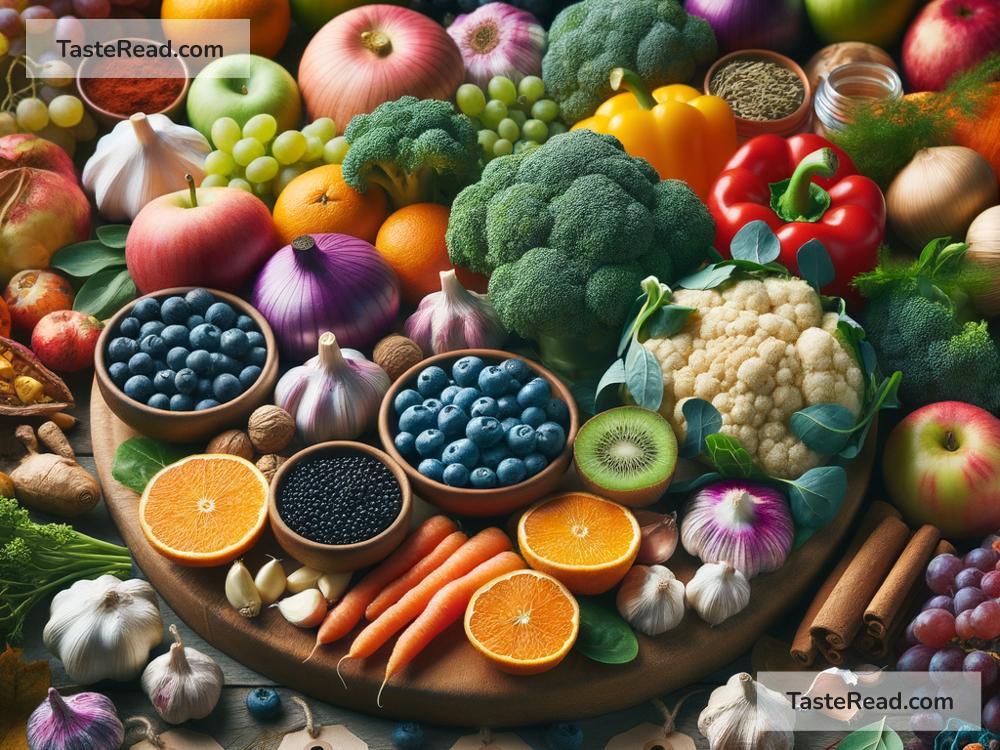Understanding the Role of Dietary Phytoalexins in Health: The Natural Defense Compounds in Your Food
Imagine plants growing outdoors—facing attacks from bugs, fungi, and environmental stress every single day. Unlike humans who can run for cover or take medicine, plants have an incredible built-in defense system to protect themselves. One part of this system includes natural compounds known as phytoalexins. These compounds help plants fight off threats, and here’s the best part: they’re good for us too! When we eat plants that produce phytoalexins, we gain health benefits that can help our bodies stay strong and healthy.
But what exactly are phytoalexins? How do they impact our health? And which foods should we eat to maximize their benefits? Let’s dive into these questions in an easy-to-understand way.
What Are Phytoalexins?
Phytoalexins (pronounced “fye-toh-uh-LEK-sins”) are natural chemicals produced by plants when they’re under stress or under attack—for example, when fungi, bacteria, or insects try to harm them. Think of phytoalexins as the plant version of an emergency response team. When trouble arrives, these compounds are quickly produced to defend the plant and help it survive tough situations.
Interestingly, phytoalexins are not always present in large amounts inside plants. They are made quickly when the plant detects a problem. Once the threat passes, production slows down. This makes phytoalexins extra valuable because they’re a response specifically designed to combat stress.
How Do Phytoalexins Impact Human Health?
Though phytoalexins exist mainly to protect plants, they bring surprising benefits to humans as well. When we eat foods that contain phytoalexins, they can help support our bodies in various ways. Here are some key ways they boost our health:
1. Antioxidant Power
Phytoalexins act like antioxidants inside the body, which means they can help reduce damage caused by harmful molecules called free radicals. Free radicals can speed up aging and lead to diseases like cancer. Antioxidants help “calm down” these harmful molecules and protect your cells.
2. Anti-Inflammatory Effects
Inflammation is the body’s way of dealing with injury or infection, but too much inflammation over a long time can lead to diseases like arthritis, diabetes, or heart problems. Some phytoalexins, such as resveratrol found in grapes, can lower inflammation and help the body stay balanced.
3. Protection Against Infections
Just as phytoalexins help plants fight bacteria and fungi, they may also give our immune system extra support. Some phytoalexins have been studied for their ability to inhibit harmful bacteria and viruses in the human body.
4. Cancer Prevention
Certain phytoalexins, like isoflavonoids found in soybeans, have shown protective properties against cancer. They may help slow down the growth of cancer cells or prevent them from spreading. While research is ongoing, the early findings are promising.
5. Heart Health
Compounds like resveratrol, found in red wine, grapes, and peanuts, are linked to better heart health. They may improve blood flow, reduce cholesterol levels, and protect against heart disease.
6. Brain Health
Some phytoalexins, such as resveratrol, are being studied for their ability to support brain health. They may protect against memory loss or diseases like Alzheimer’s by reducing inflammation in the brain.
Where Can You Find Phytoalexins?
The good news is that phytoalexins are not rare—you can find them in many everyday fruits, vegetables, and other plant-based foods! Here are some delicious examples:
- Resveratrol: Found in red grapes, blueberries, peanuts, and red wine. It’s famous for its heart and brain health benefits.
- Isoflavonoids: Found in soybeans, chickpeas, and lentils. These compounds may help balance hormones and protect against cancer.
- Glucosinolates: Found in broccoli, cabbage, kale, and other cruciferous vegetables. They are linked to cancer prevention.
- Allicin: Found in garlic and onions. It’s known for fighting bacteria and supporting heart health.
To make the most of phytoalexins in your diet, focus on eating a variety of colorful fruits and vegetables. Many phytoalexins are concentrated in the skins or outer layers of plants, so eating whole foods (instead of peeling them) is often the best option. Additionally, many of these compounds increase when plants are slightly stressed—so locally grown or organic produce may contain higher levels than conventionally grown crops.
Tips to Include More Phytoalexins in Your Diet
Adding phytoalexin-rich foods to your meals can be simple and delicious! Here are some practical tips:
-
Start Your Day with Berries: Add blueberries, grapes, or strawberries to your breakfast. They’re rich in resveratrol and other antioxidants.
-
Eat More Cruciferous Vegetables: Steam or roast broccoli, cauliflower, or kale for your lunch or dinner.
-
Snack Smart: Munch on edamame (soybeans) or a handful of peanuts for a healthy, phytoalexin-packed snack.
-
Use Garlic and Onions: Add garlic and onions to soups, stir-fries, and sauces. Their allicin content boosts both flavor and health benefits.
-
Go Whole: Try to eat the skins of fruits and veggies, which often contain higher concentrations of phytoalexins.
Final Thoughts: Nature’s Medicine
Phytoalexins are an incredible example of how nature takes care of us. These plant defense compounds not only help plants survive challenges but also give our bodies tools to fight disease, reduce inflammation, and stay healthy. By eating lots of colorful fruits, vegetables, and legumes, you’re giving your body the best chance to thrive.
So next time you enjoy a vibrant salad or snack on juicy grapes, remember: you’re not just feeding your body—you’re giving it natural, plant-powered medicine. Small choices can lead to big health benefits, and phytoalexins are an easy way to add protective power to your diet!


